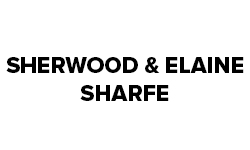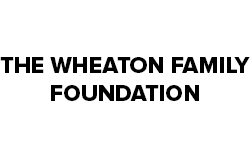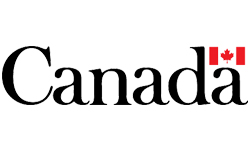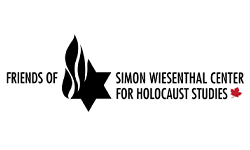GRADE 3 CITIZENSHIP STUDIES ENGAGED CITIZENS
Part A: Curricular Connections and Background
BROAD AREA OF CITIZENSHIP
Engaged citizens strive to understand issues from a variety of viewpoints. Students will begin to explore processes of dispute resolution and examine and practice actions that contribute to peace and order. Critical thinking exploration in this area of citizenship encourages students to try to understand a point of view that is different from their own.
OVERVIEW AND DESIRED RESULTS OF CITIZENSHIP STUDY
- understand and value the historical and contemporary diversity in groups;
- explore the relationships between beliefs, rights, and responsibilities at a school, community, and national level; and,
- understand the different types of governance and their responsibilities at the local and national levels.
CURRICULUM OUTCOMES AND INDICATORS
Students think about the varying impacts that rules have on people and as students strive to understand that, they also work to understand the underlying purpose behind the rule.
- Enduring understandings are the big ideas that stimulate thinking, guide the inquiry and are linked to outcomes.
- Essential questions point to the “big ideas’ in the inquiry and should be considered and reconsidered as the inquiry progresses.
- Answers to these questions form the evidence of learning at the end of study.
- Decision-making is a complex process with far-reaching impacts and is influenced by history. A person’s worldview frames their understanding of the world.
- Citizens value the need of the collective common good and consider how their actions impact the collective well-being.
- Governments and the people who elect them are responsible to one another.
- Empathy and respect for diversity in cultural and social groups help strengthen one’s community and requires appreciation of different perspectives.
- Individuals have the power to affect others and make a difference.
- Canada has a long relationship with First Nations Peoples through treaty relationships.
- Societies create rules, written and unwritten, to promote order that lead to inclusion or exclusion and are enforced by social behaviours and expectations.
- Belonging requires participation and is a fundamental right of all citizens. Active citizens become engaged in discussions, negotiations, debates and consider action regarding Canadian issues.
KNOWLEDGE AND SKILL DEVELOPMENT
- Determine the governing body and the rules/laws they develop so they can think about fairness, and consider how to advocate effectively to support or change the rules/laws.
- Determine the impact of rules on diverse groups that live in Canada.
- Determine the sphere of influence of rules that govern behavior of the province of Saskatchewan.
- Determine a process for advocacy. Understand that the perceived fairness of rules on diverse groups that live in Canada may be influenced by point of view.
- Advocate effectively to support or change rules to promote social order.
ESSENTIAL QUESTIONS
- How do people who live together organize themselves?
- How much do rules matter?
- Who monitors the rule makers?
- How much power should leaders have?
- To whom are rule makers responsible?
- Why are treaty relationships important to all Canadians?
- What is another point of view of this (any) matter?
CURRICULUM OUTCOMES AND INDICATORS
PA3.2
Demonstrate awareness that different points of view may lead to better understandings and acceptance that people can believe different things and still live peacefully together.
Indicators:
- Inventory situations in which divergent viewpoints exist within the classroom and school.
- Solicit the opinion of several persons about a current issue of concern in the school.
- Categorize viewpoints as likely or unlikely to create conflict and explain why.
- Construct a list of reasons why groups and communities may experience conflict, and identify ways in which conflict is resolved and harmony is restored.
- Respond to the following question: “Why might people be in favour or against a particular project or issues (e.g., fear that it might cost too much or that it might be too much work, one’s own idea was rejected, desire to contribute to the community, desire to beautify the community)”.
- Paraphrase orally and in writing a favourable opinion and an unfavorable opinion about an issue of concern in a community studied.
- Stimulate one or more conflict resolution models as a means of resolving an issue in the school or community.
- Research different laws and rules in communities studied, and speculate upon the reasons for such laws and rules.
PA 3.3
Make generalizations about the purpose and intent of documents that define the rights of children.
Indicators:
- Research the United Nations Declaration of the Rights of the Child and the Universal Declaration of Human Rights, and suggest reasons for these declarations.
- Research the Canadian Charter of Rights and Freedoms and child protection legislation in Saskatchewan.
- Compare the rights and protections for children in Saskatchewan to those in international communities studied.
- Compare how the rights, responsibilities, and roles of citizens in international communities studied are the same or different than those of Canadian citizens.
IN3.1
Analyze daily life in a diversity of communities.
Indicators:
- Describe characteristics of daily life in communities studied, and compare the ways in which the needs are met by individuals in diverse communities (e.g., housing, tools, work, use of the land, games, education).
- Give examples of how culture is reflected in daily life in various communities, and examine why these cultural elements are important (e.g., language, stories, cultural traditions, religions traditions, recreations, art, architecture, clothing).
- Compare life of a child in the local community to life of a child in one of the communities studied (e.g. family, housing, education, recreation.
IN3.2
Analyze the cultures and traditions in communities studied.
Indicators:
- Hypothesize about the interactions students may have with people and communities elsewhere in the world.
- Give examples of traditions and practices that have endured over time in communities studied, and discuss why these are important.
- Make inferences about how the culture of the local community is reflected by its customs and celebrations.
Overarching Outcome
DR3.1
Use various model representations of the Earth.
Indicators:
- Demonstrate understanding that the surface of the Earth can be represented through maps, aerial photographs, and satellite images.
- Identify geographic concepts including continents, countries, borders, hemispheres, and the equator.
- Locate and identify the continents and oceans on a map or globe.
- Locate and identify countries or regions studied on a map or globe.
DR 3.2
Assess the degree to which the geography and related environmental and climatic factors influence ways of living on and with the land.
Indicators:
- Identify the influences that geography has on societies (e.g., location of settlements, transportation of goods and people, types of industry such as farming, ranching, forestry, mining, tourism, and manufacturing).
- Recognized how environmental and climatic factors are influenced by location (e.g., proximity to water bodies influences precipitation and temperature; mountainous terrain influences soil formation, precipitation, and temperature).
© 2024 Concentus Citizenship Education Foundation Inc. All Rights Reserved.









